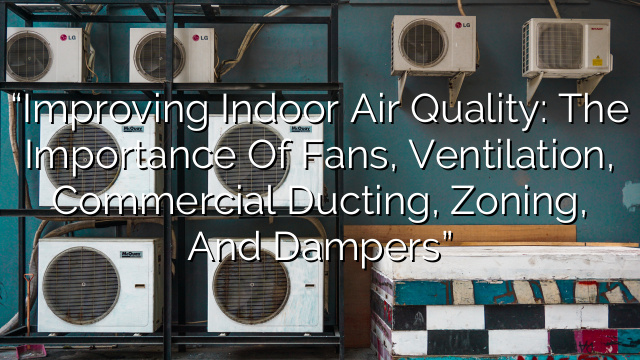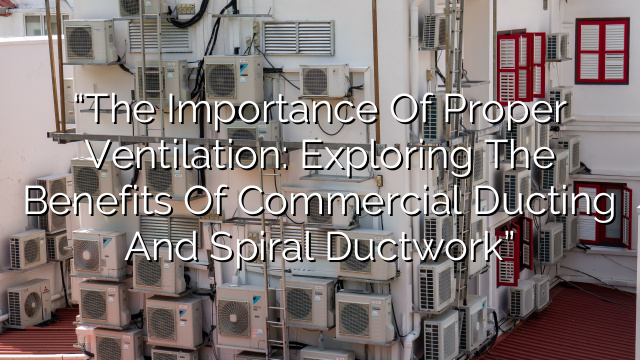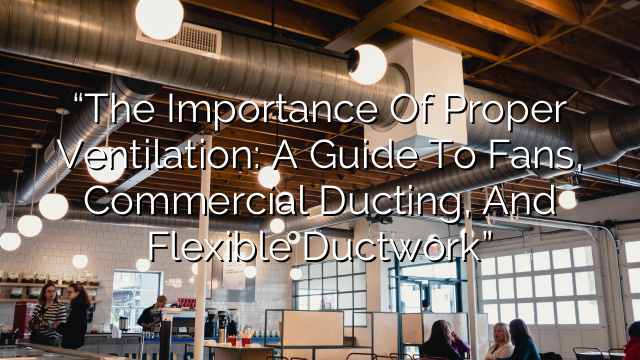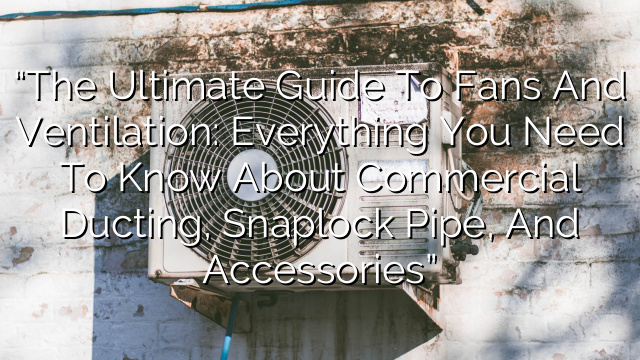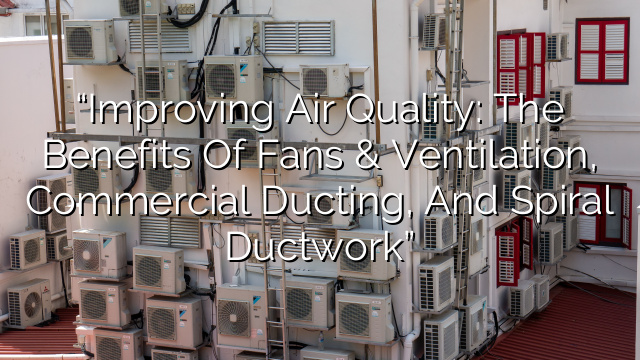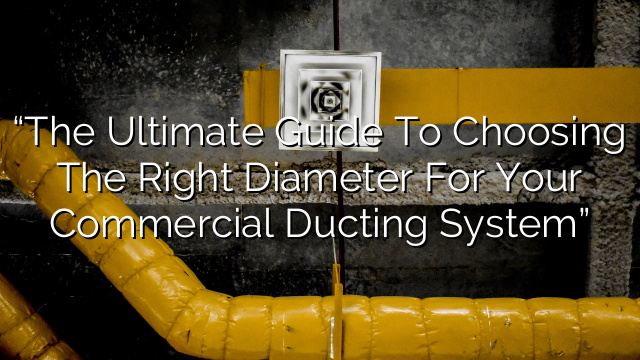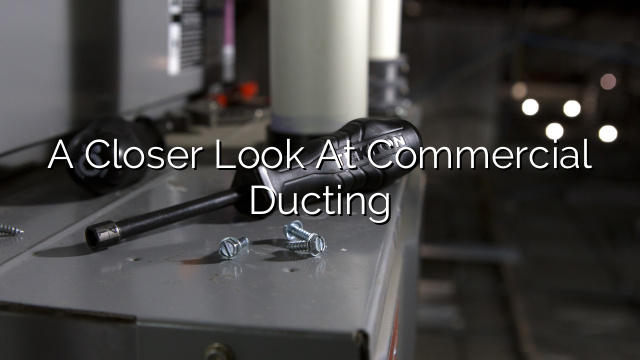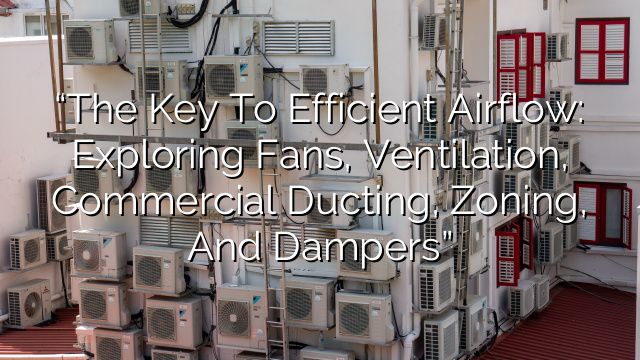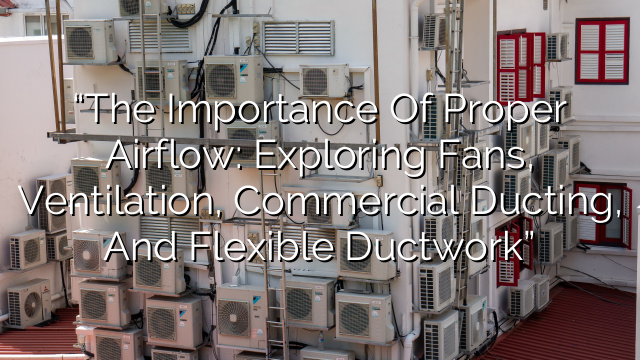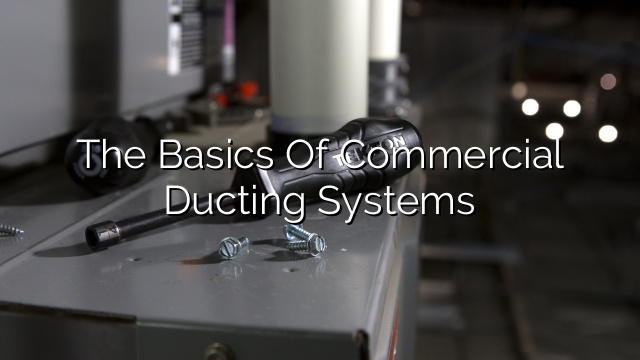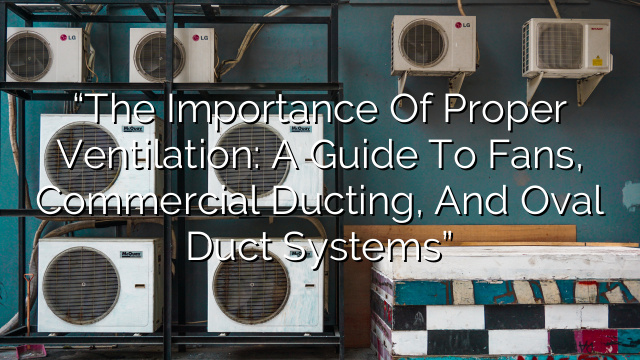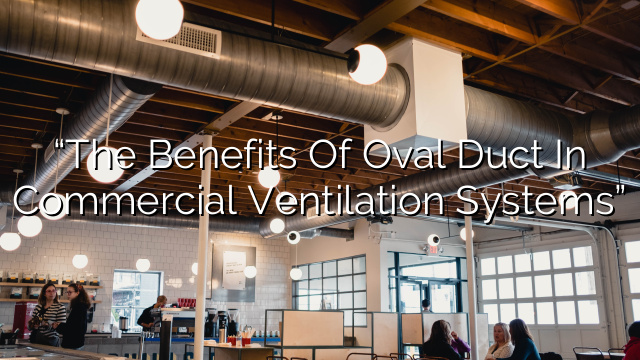Why Voltage Matters for Commercial Ducting and Ventilation
When it comes to commercial ducting and ventilation systems, one important factor that facility managers need to consider is voltage. The voltage of your system can have a significant impact on its efficiency, performance, and overall functionality. Choosing the right voltage for your commercial ducting and ventilation setup is crucial to ensure optimal operation and longevity of the equipment.
Understanding Voltage and its Impact on Commercial Ducting and Ventilation
Voltage refers to the electrical potential difference between two points in a circuit. In the context of commercial ducting and ventilation systems, it affects the power supply and performance of the fans and motors that drive the system. The voltage rating of your system determines its input electrical power, which in turn affects its airflow capacity, energy consumption, and overall performance. That’s why it is crucial to understand the different voltage options available and select the one that best suits your facility’s needs.
Choosing the Right Voltage for your Commercial Ducting and Ventilation System
When selecting the voltage for your commercial ducting and ventilation system, several factors need to be considered:
- Electrical Infrastructure: The first thing to consider is the electrical infrastructure of your building. Determine the electrical service available, including the voltage supply from the utility company, and ensure that your system’s voltage requirements align with it. This will prevent the need for significant electrical upgrades or rewiring, which can be costly.
- Amps and Load: Consider the electrical load and amperage requirements of your ducting and ventilation system. Higher voltage systems generally require lower amperage to achieve the same power output. This can lead to reduced energy consumption, increased energy efficiency, and potentially lower utility bills.
- Equipment compatibility: Ensure that the fans, motors, and other components of your system are compatible with the chosen voltage. Consult the manufacturer’s specifications and guidelines to make an informed decision.
- Future Expansion: Consider any potential future expansion plans or changes in your facility that might affect your electrical infrastructure. Selecting a voltage option that allows for flexibility and adaptability can save you from costly modifications later on.
Different Voltage Options for Commercial Ducting and Ventilation Systems
Commercial ducting and ventilation systems typically come in three voltage options:
- 208 Volts: This voltage option is suitable for smaller facilities with lower power demands. It is commonly used in commercial spaces where lower voltage alternatives are already available. However, it is essential to ensure that your equipment is compatible with this voltage rating before making a decision.
- 240 Volts: The 240-volt option is a popular choice for mid-range commercial facilities. It provides a good balance between power output and energy efficiency. It is also widely available and compatible with a range of commercial ducting and ventilation equipment.
- 460 Volts: This voltage rating is commonly used for large commercial or industrial applications where high power output is required. It allows for greater energy efficiency due to lower amperage requirements.
It is crucial to consult with an experienced HVAC professional or an electrical engineer to assess your facility’s specific needs and recommend the most suitable voltage option for your commercial ducting and ventilation system.
FAQs
Q: Can I use a voltage converter to switch between different voltage ratings?
A: While voltage converters are available, they are not recommended for commercial ducting and ventilation systems. These systems require a steady, reliable power supply, and using voltage converters can introduce additional strain and potential issues to the equipment’s performance and longevity.
Q: Can I change the voltage of my existing commercial ducting and ventilation system?
A: In some cases, it may be possible to modify the voltage of your existing system. However, this requires careful consideration and assessment by a qualified professional to ensure compatibility with the equipment, electrical infrastructure, and any applicable building codes or regulations.
Q: Are there any safety concerns associated with different voltage options?
A: All voltage options mentioned are considered standard for commercial ducting and ventilation systems and pose no significant safety concerns when properly installed and maintained. However, it is crucial to follow proper safety protocols and guidelines during installation, including proper grounding and insulation.
Q: How can selecting the right voltage save energy?
A: Opting for a higher voltage system can reduce energy consumption since it requires lower amperage to achieve the same power output. This leads to improved energy efficiency and potentially lower utility bills over time.
Q: Is it possible to change the voltage of my facility’s electrical infrastructure to accommodate a different voltage rating?
A: Modifying the electrical infrastructure of a facility to accommodate a different voltage rating can be a complex and expensive process. It may involve rewiring, electrical service upgrades, and other significant modifications. Consult with an electrical engineer or a qualified professional to assess the feasibility and potential costs involved.
Choosing the right voltage for your commercial ducting and ventilation system is a decision that should not be taken lightly. Consider the electrical infrastructure, amperage requirements, equipment compatibility, and any future expansion plans to make an informed choice. Consulting with professionals in the field will ensure that you select the most suitable voltage option that maximizes efficiency, performance, and longevity for your facility’s ducting and ventilation system.


